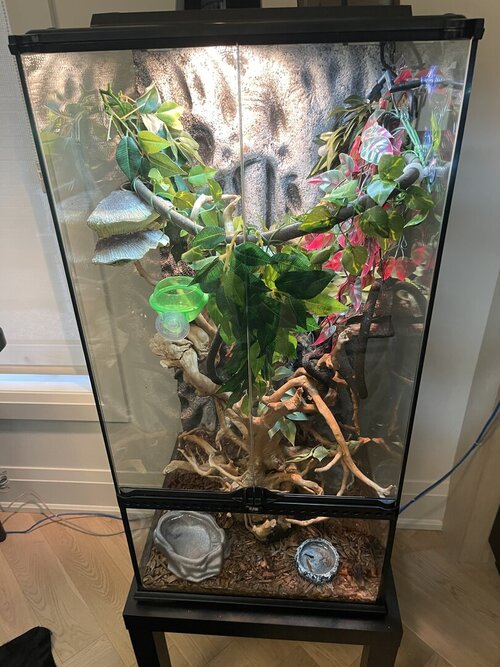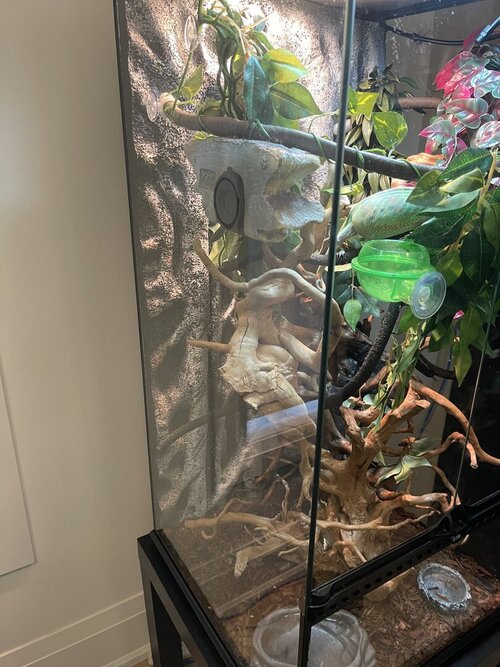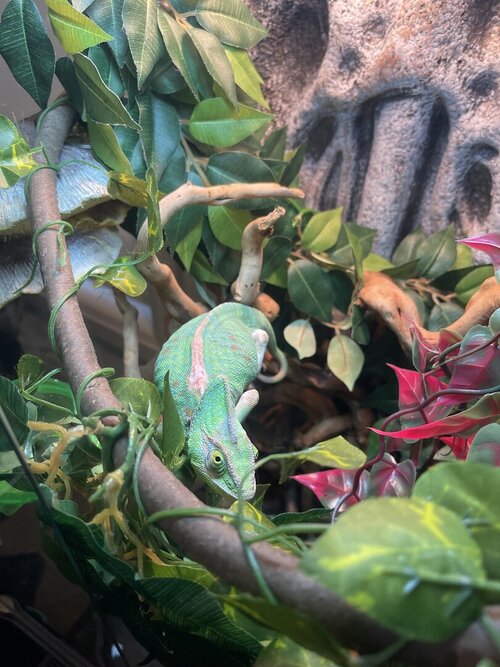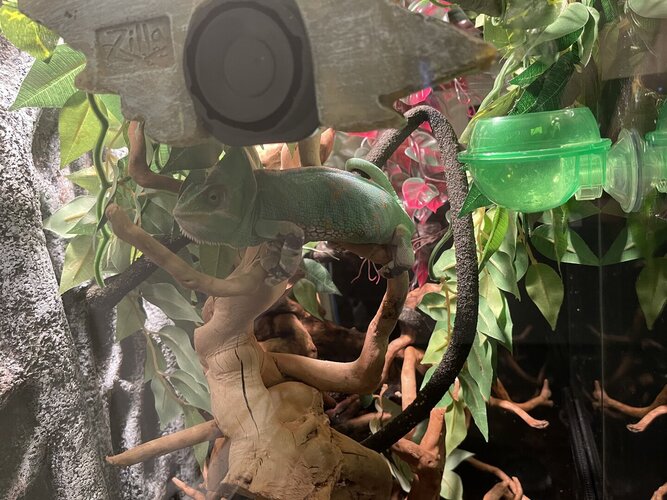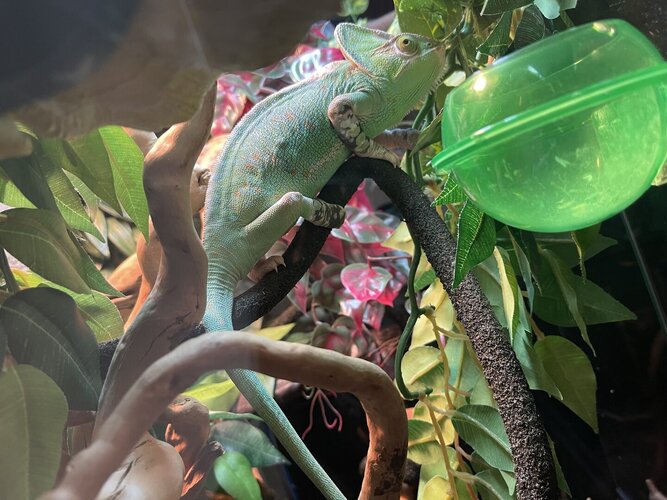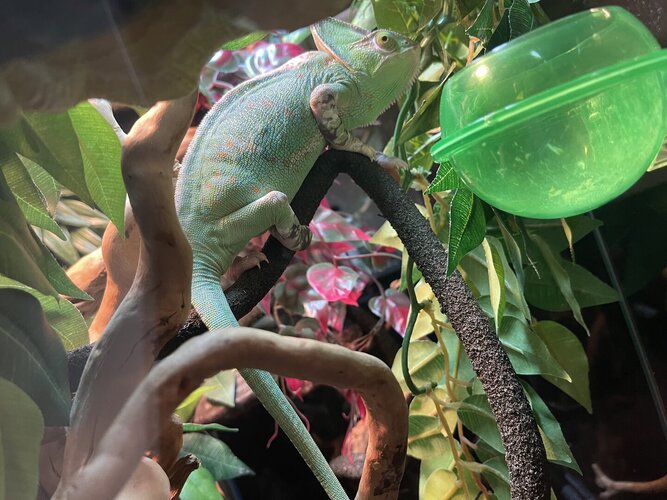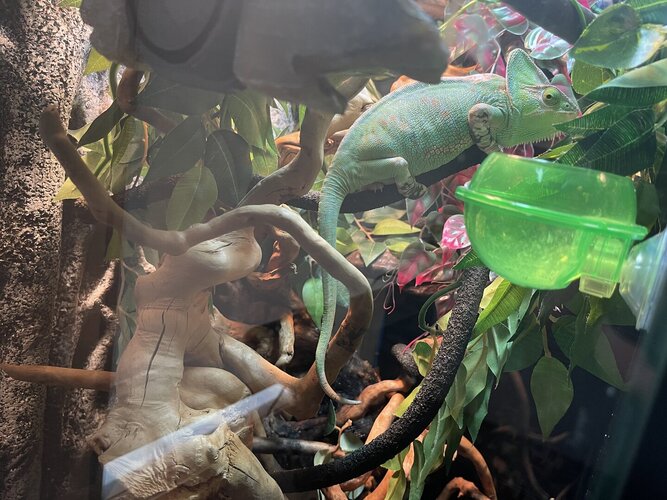PandoraCham
New Member
Hello,
I've only owned Pandora for about a month now. She's an adult Chameleon probably 3-4 years old. When I first got her home she was very active. I'm trying to do my best to take care of her, but she has gotten lathargic in the last couple of days. I have a vet appointment, but not until next week and we all know how seeing our chams in pain is heartbreaking. I'm really hoping for help here. I've put the details in the best that I can and will post a pic of her accommodations shortly.
Chameleon Info:
Cage Info:
Current Problem - The current problem you are concerned about. Recent lathargy, as well as falling. Sleeping at points during the day, not active Over supplementation?
I've only owned Pandora for about a month now. She's an adult Chameleon probably 3-4 years old. When I first got her home she was very active. I'm trying to do my best to take care of her, but she has gotten lathargic in the last couple of days. I have a vet appointment, but not until next week and we all know how seeing our chams in pain is heartbreaking. I'm really hoping for help here. I've put the details in the best that I can and will post a pic of her accommodations shortly.
Chameleon Info:
- Your Chameleon - The species, sex, and age of your chameleon. How long has it been in your care? She's a veiled chameleon, female, approx 3-4 years old. I have owned her now for just over 1 month. She has a previously healed burn on her spine from previous owners setup presumably. I'm also aware that she is ummm 'portly' and I'd like to manage that better.
- Handling - How often do you handle your chameleon? I've had her out 2-3 times per week, always on her own terms, but she has no interest in coming out these last couple of days.
- Feeding - What are you feeding your cham? What amount? What is the schedule? How are you gut-loading your feeders? She has an assortment of med sized crickets, super worms, silk worms and occasionally hornworms as a treat. She generally gets 2 worms and eats 5-7 crickets every other day. They are gut loaded with Flukers cricket food, and flukes cricket quencher
- Supplements - What brand and type of calcium and vitamin products are you dusting your feeders with and what is the schedule? Reptical w/o D3 every feeding, reptivite w/ D3 1x per week. It's now noted that I had previously been doing this too often and have reduced the supplementing to that above.
- Watering - What kind of watering technique do you use? How often and how long to you mist? Do you see your chameleon drinking? We have a monsoon 1 that goes off every 2 hours for 16 seconds. I also mist 2x per day. Hygrometer generally shows between 40-50
- Fecal Description - Briefly note colors and consistency from recent droppings. Has this chameleon ever been tested for parasites? Based on other descriptions on this page, my sense is that her fecal matter is normal both for urite and feces
- History - Any previous information about your cham that might be useful to others when trying to help you. Only that I've had her for a month, that she's large, seems to fall regularly right now. Not active. Eats fine (ate today)
Cage Info:
- Cage Type - Describe your cage (Glass, Screen, Combo?) What are the dimensions? Glass 36x18x18. She grew up in a 24x18x18 so I have her in one that is larger. I realize that cage is better, but I believe glass is controlled better. I'm in Canada (Ontario)
- Lighting - What brand, model, and types of lighting are you using? What is your daily lighting schedule? UVB bulb is new when I got her 5.0. T5, + Flukers Sun Dome w 100w bulb
- Temperature - What temp range have you created (cage floor to basking spot)? Lowest overnight temp? How do you measure these temps? 80 during the day, lowest is 60-65 at night.
- Humidity - What are your humidity levels? How are you creating and maintaining these levels? What do you use to measure humidity? Hygrometer shows 40-50
- Plants - Are you using live plants? If so, what kind? No, all fake, but realize that having live will be helpful.
- Placement - Where is your cage located? Is it near any fans, air vents, or high traffic areas? At what height is the top of the cage relative to your room floor? It's in my office on the main level of the house.
- Location - Where are you geographically located? Ontario Canada.
Current Problem - The current problem you are concerned about. Recent lathargy, as well as falling. Sleeping at points during the day, not active Over supplementation?

